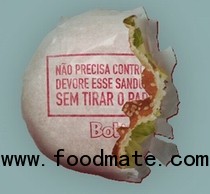 Recent years have seen several advances in food packaging, from incorporating FSC certified paper to making it compostable. While commendable, many of these innovative packages still end up in the landfill – where they may sit for hundreds of years. Compostables only break down if consumers or restaurants take the extra steps to separately sort them from the waste stream into the compost bin, and that’s if local composting facilities even exist.
Recent years have seen several advances in food packaging, from incorporating FSC certified paper to making it compostable. While commendable, many of these innovative packages still end up in the landfill – where they may sit for hundreds of years. Compostables only break down if consumers or restaurants take the extra steps to separately sort them from the waste stream into the compost bin, and that’s if local composting facilities even exist.While this week your mind may be on holiday gift wrapping, which has some innovative sustainable options itself, consider what an improbably named Brazilian food restaurant called Bob’s is doing: Its burgers were recently wrapped in packaging you could eat, right along with your food. Zero waste, done in taste, as it were. According to Springwise, this campaign was conceived with advertising agency NBS. The wrappers were made with edible rice paper.
Wisely, the focus of the campaign wasn’t on the environmental benefits. The campaign cheekily focused on the fact that the burgers were so irresistible, you couldn’t even wait to take off the wrapper. That it had positive ecological benefits was a happy by-product. Messaging like this effectively sidesteps green fatigue and opens the door to those who wouldn’t normally think of themselves as environmentally conscious.
Something other companies, food focused and otherwise, would do well to take note of and consider emulating.
While this is not the first time edible food packaging has been used, previous iterations required a sizable psychological leap for the consumer to embrace such options. A Bob’s bun wrapper also requires a leap of faith, but to a smaller degree, as it’s visually identical to the normal experience people encounter.
While Bob’s only switched its paper wrapping for the length of an ad campaign, the concept bears investigating on a full time basis. Not only would it reduce waste and the energy/costs incurred in trash disposal, a campaign like this would (at this point) be a social-media friendly differentiator that would be a boost to its brand. Though it would likely cost more per unit, the goodwill and organic word of mouth marketing this would generate could offset the nominal cost.
The only remaining part of the equation is the source of such packaging. It needs to be manufactured sustainably so it’s not producing a greater impact than paper.





